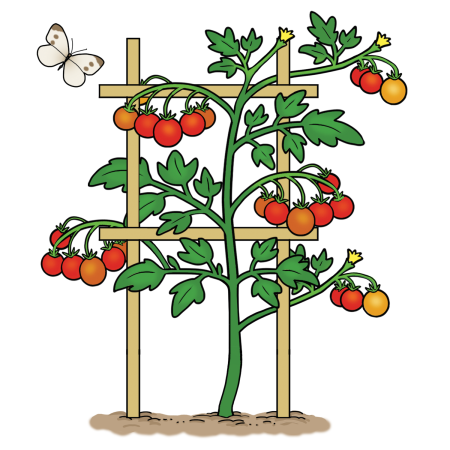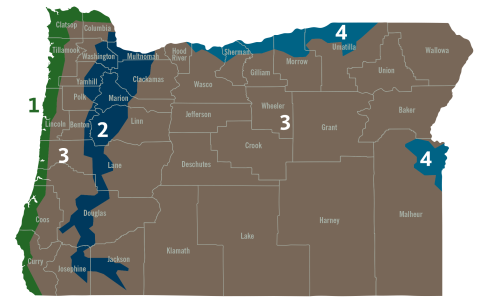
- Summer can heat up the garden. When it's hot out, water in the early morning. You'll use less water and your plants will be able to drink throughout the day.
- Add mulch to help conserve water in the soil. Mulch can be wood chips, leaves, plastic or any material that covers the soil.
- Monitor tomatoes and squash for leaf diseases like powdery mildew. Plants need air flow between them to help prevent mildew.
- Fertilize plants to help them grow strong and increase their production. As vegetables grow, they remove nutrients from the soil. Adding nutrients back into the soil helps plants grow strong and produce more. Deciding on what fertilizer to use can be overwhelming because there are so many choices. Fertilizers have three numbers representing the nutrients nitrogen, phosphorus and potassium (N-P-K). For example, you might see 24-8-16, 8-12-16 or 4-4-4. Use one with low numbers such as 4-4-4 to provide enough nutrients without overdoing it. Too much fertilizer can be toxic to plants and harm the environment. It also wastes money. Always follow package directions when using fertilizer.
- Extend the gardening season: July is a great time for starting fall crops like broccoli, kale, beans, carrots and peas.
Kids Can!
Show kids how to harvest above-ground vegetables. Teach them to cut, twist or pinch. Never pull!
Where is your garden?
Oregon has four growing regions. Choose vegetable varieties and planting dates suitable to the growing conditions in your area:

- Oregon coast: cool, long season of 190 to 250 days.
- Western valleys: 150 to 250-day season; warm days, cool nights; length of season varies year to year.
- High elevations: short growing season of 90 to 120 days; frost can occur during any month.
- Columbia and Snake River valleys: 120 to 200-day season; hot days, warm nights; length of season fairly well defined.


